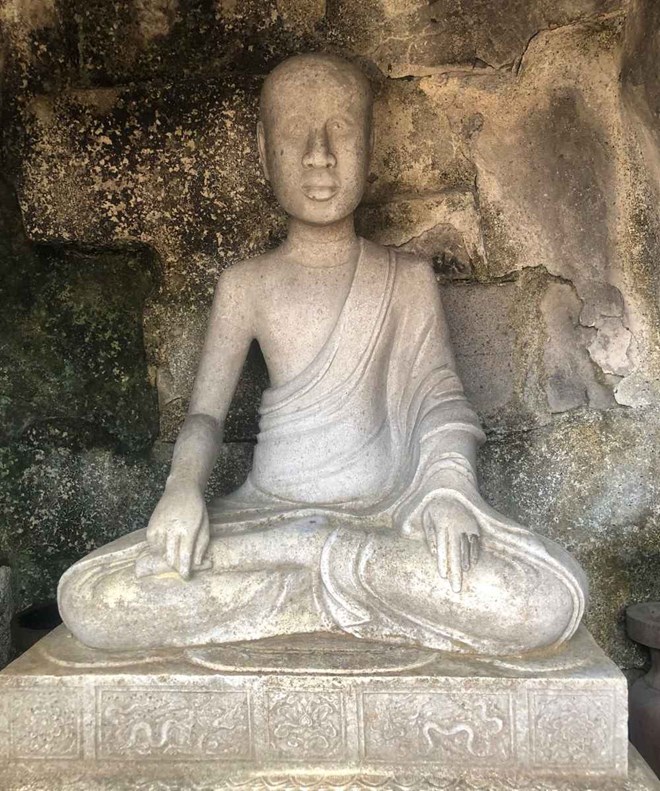
Currently, the national treasure, the statue of Buddha Emperor Tran Nhan Tong, is still preserved and protected in Hue Quang Tower Garden on the sacred Yen Tu mountain, while the Ngoa Van Golden Box is currently kept at Quang Ninh Museum, Ha Long ward.
The statue of King Tran Nhan Tong – Yen Tu, is a unique artifact, recognized as a national treasure in the 9th period (2020). The statue is enshrined in the Patriarch Tower (Hue Quang Tower) in the Yen Tu relic site, Quang Ninh province.
According to the Management Board of Monuments and Landscapes of Quang Ninh province, the statue of Buddha King Tran Nhan Tong in Yen Tu is a statue carved from stone dating back to the 17th century, one of two types of stone used to build Hue Quang tower today and also the type of stone used to build Hue Quang tower during the Tran dynasty.
This is a unique ancient statue that does not overlap with any other statue in terms of posture, robe, decorative motifs and appearance. This is also the oldest statue that still represents the image of Buddha Emperor Tran Nhan Tong.
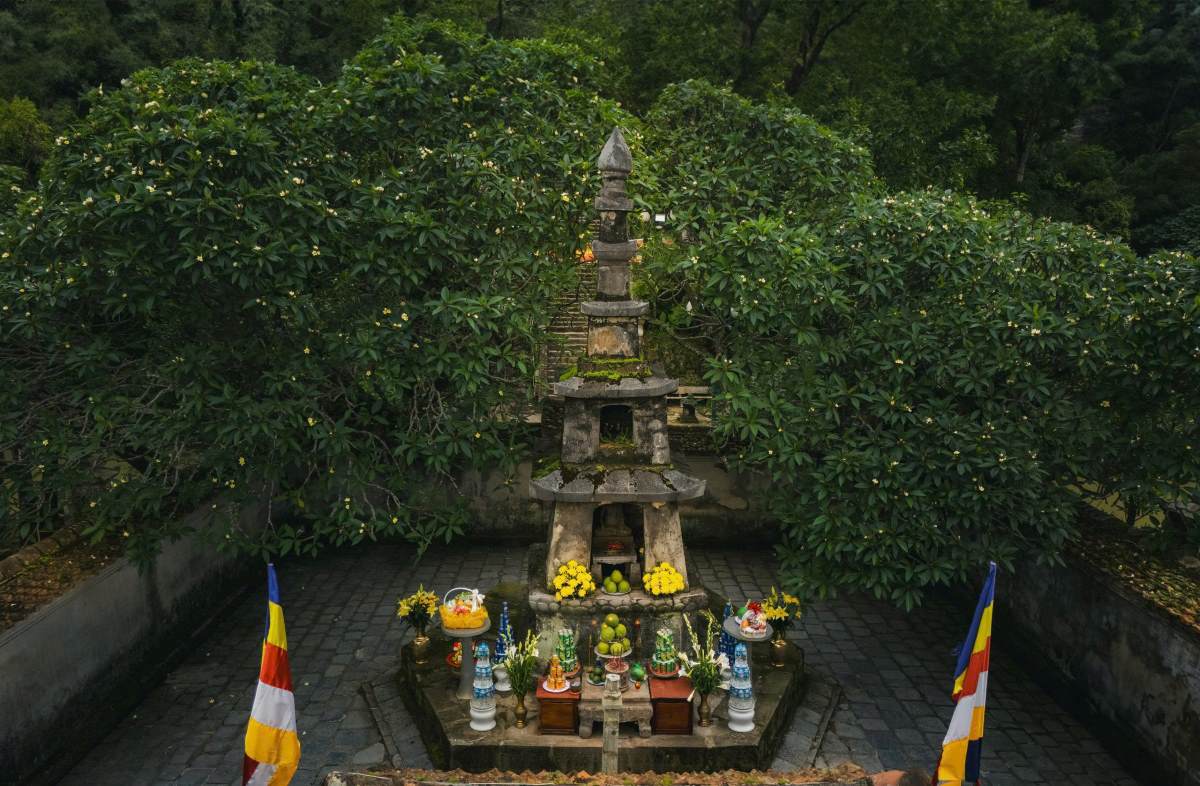
The ancestral tower is located in Hue Quang Tower Garden, Yen Tu - where the statue of Buddha King Tran Nhan Tong is located. Photo: Viet Anh
The statue is completely hand-carved, consisting of two parts: the pedestal and the body of the statue. The total height of the statue is 83.8cm (of which the body is 59cm high, the pedestal is 8cm high; the kneeling legs and base are 16.8cm high), the head is 13.5cm wide.
The statue's robes and meditation posture show a free, selfless, non-attached and contingent posture, but no less standard in thought and practice of the Enlightened One.
Meanwhile, the Ngoa Van - Yen Tu Gold Box, also a unique artifact, was recognized as a national treasure in the 7th period (2018).
The artifact was discovered on June 21, 2012 in Trai Loc village, An Sinh commune, Dong Trieu, Quang Ninh province (now An Sinh ward, Quang Ninh province) during the construction of expanding the spiritual pilgrimage road from Trai Loc to Ngoa Van pagoda relic - where King Tran Nhan Tong became a Buddha.
The artifact is 4.2cm tall, weighs 56.44 grams (equivalent to about 15.04 taels of gold), and has the shape of a lotus flower. According to researchers, this could be a precious item in the royal palace.
The box has a spherical shape, the body has 11 embossed segments, each segment resembles a curved lotus petal. The shape of the box itself is a lotus in full bloom. The box body has a segmented base simulating the shape of a lotus petal, the surface is smooth, the segmented body is attached to the base, the lotus petal body is decorated with clouds and lemon flowers (also known as lotus flowers); the mouth of the body has a joint to cover the box lid.
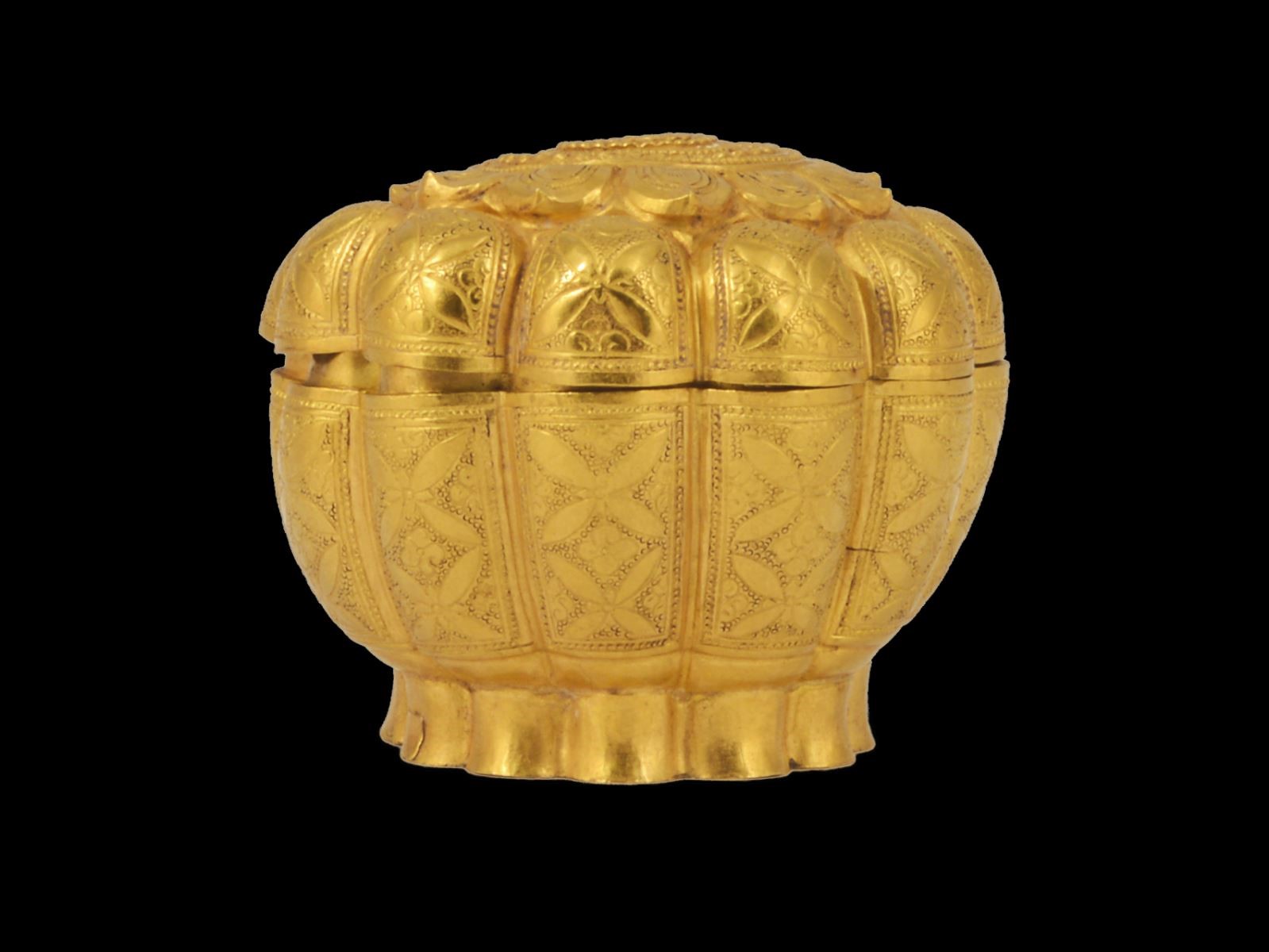
The Ngoa Van - Yen Tu gold box. Photo: Quang Ninh Museum
The lid of the box is hemispherical, the part that is adjacent to the body forms 11 large outer petals, in the middle of the lid is a lotus pedestal. The lotus pedestal has 4 layers of petals arranged in concentric circles and is crafted with very sophisticated and realistic patterns. In the center of the lid is a concave lotus mirror, which further enhances the shape of the surrounding lotus layers. At the same time, the overall view of the box from above looks like a fully bloomed lotus with many layers of petals showing off their colors and spreading their fragrance.
Based on the appraisal results of the Antiquities Appraisal Council (Ministry of Culture, Sports and Tourism), according to scientists , it can be confirmed that the Ngoa Van - Yen Tu Golden Box dates back to the Tran Dynasty, the first half of the 14th century.
The box is still intact. Up to now, no individual or locality in Vietnam has discovered or preserved a similar artifact. Therefore, the Ngoa Van - Yen Tu Golden Box is a unique artifact.
Source: https://laodong.vn/van-hoa-giai-tri/hai-bao-vat-quoc-gia-cua-di-san-the-gioi-yen-tu-1598108.ldo



![[Photo] President Luong Cuong attends the 80th Anniversary of the Traditional Day of the Armed Forces of Military Region 3](https://vphoto.vietnam.vn/thumb/1200x675/vietnam/resource/IMAGE/2025/10/28/1761635584312_ndo_br_1-jpg.webp)
![[Photo] Draft documents of the 14th Party Congress reach people at the Commune Cultural Post Offices](https://vphoto.vietnam.vn/thumb/1200x675/vietnam/resource/IMAGE/2025/10/28/1761642182616_du-thao-tai-tinh-hung-yen-4070-5235-jpg.webp)



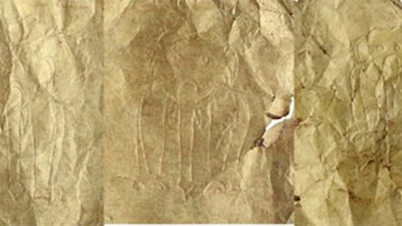

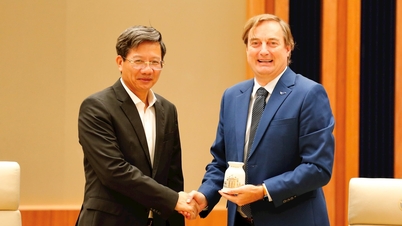

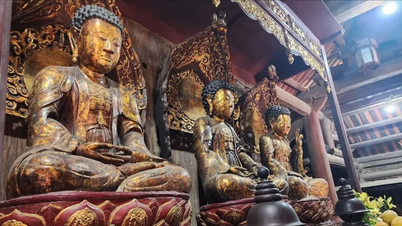

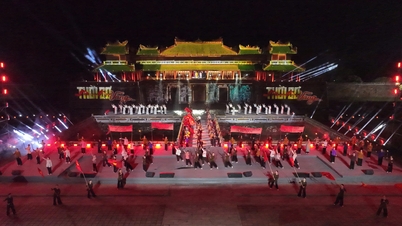

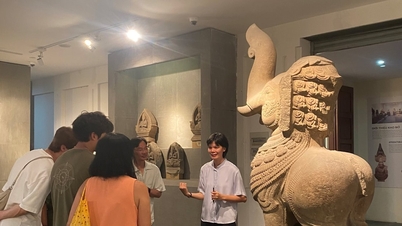




















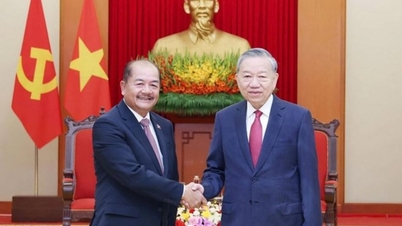
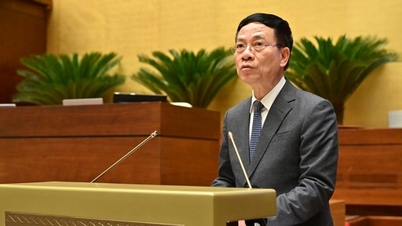

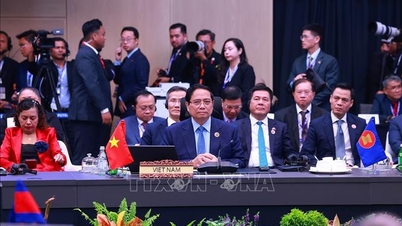

![[Photo] The 5th Patriotic Emulation Congress of the Central Inspection Commission](https://vphoto.vietnam.vn/thumb/1200x675/vietnam/resource/IMAGE/2025/10/27/1761566862838_ndo_br_1-1858-jpg.webp)










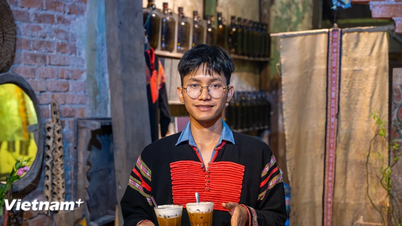












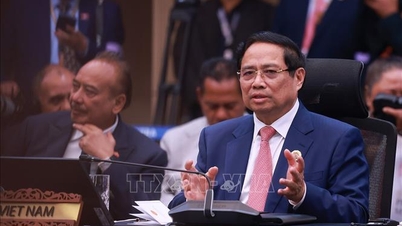
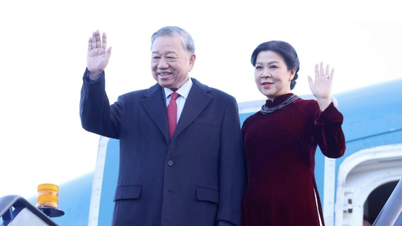







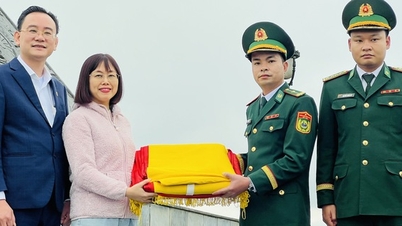


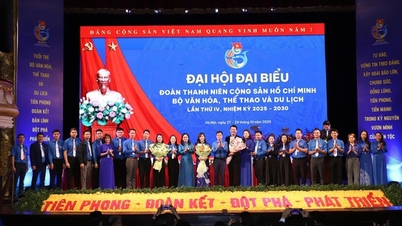


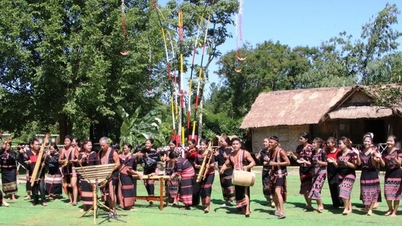









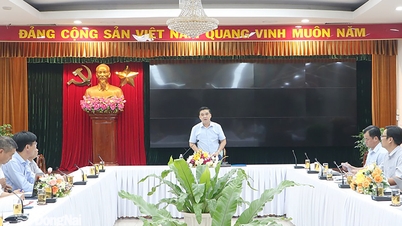














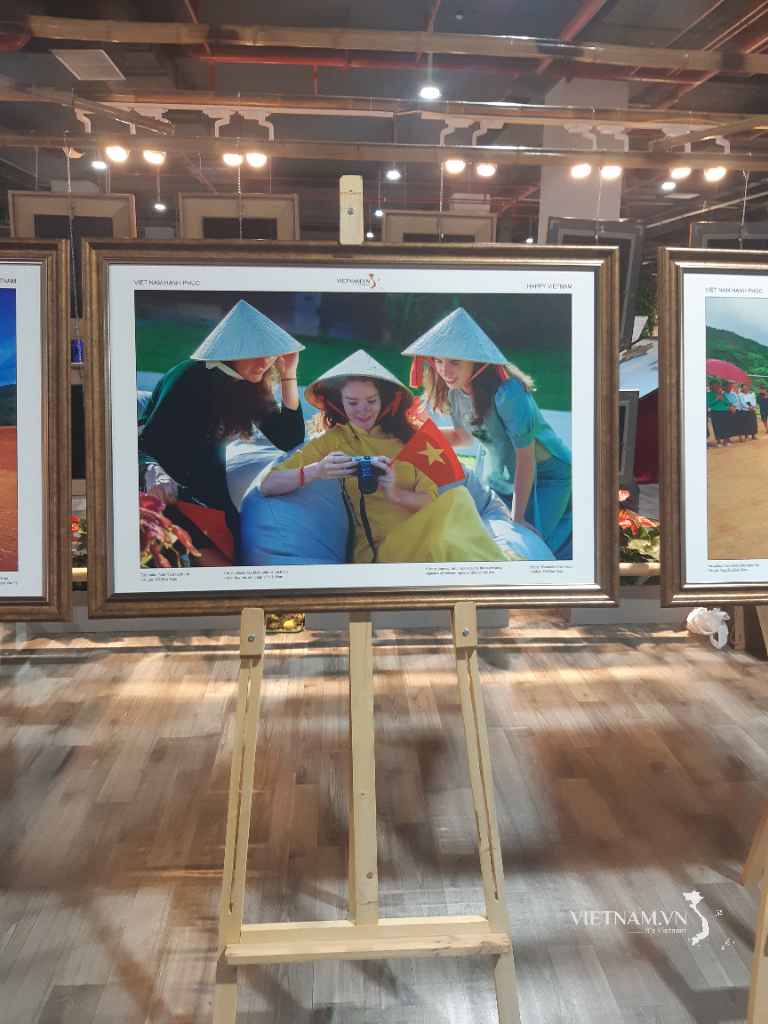


Comment (0)